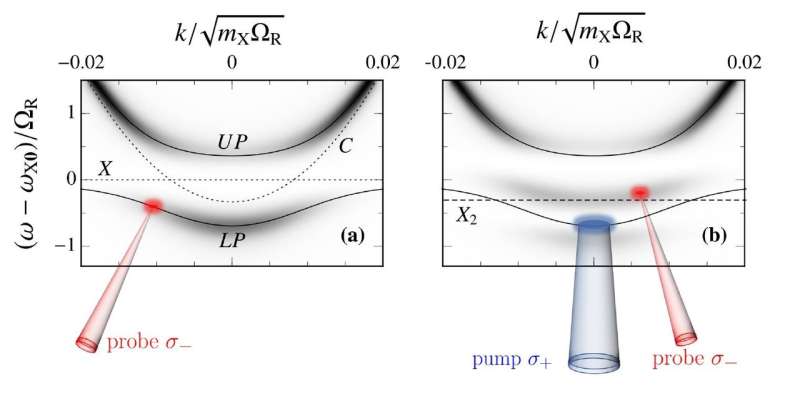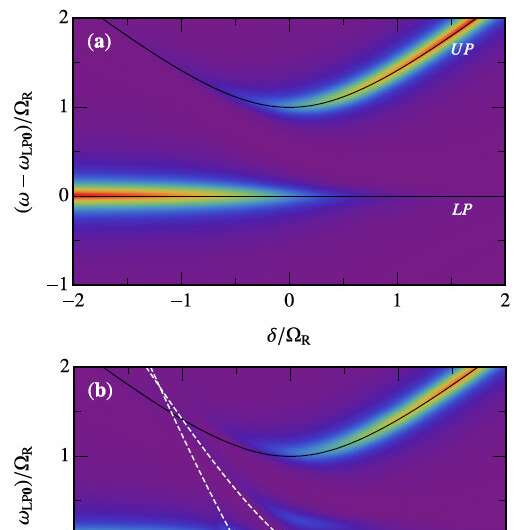Applying quantum-impurity theory to quantum fluids of light

A Monash-led study develops a new approach to directly observe correlated, many-body states in an exciton-polariton system that go beyond classical theories.
The study expands the use of quantum impurity theory, currently of significant interest to the cold-atom physics community, and will trigger future experiments demonstrating many-body quantum correlations of microcavity polaritons.
Exploring quantum fluids
"Exciton-polaritons provide a playground in which one can explore room temperature quantum fluids, and the novel properties of many-body non-equilibrium systems," says study author A/Prof Meera Parish.
However, despite their intrinsic quantum nature as superpositions of matter and light, most recent results can be described through the physics of non-linear, classical waves.
The new study shows how one can probe beyond mean-field quantum correlations in a many-body polariton system through quantum impurity physics, where a mobile impurity is dressed by excitations of a quantum-mechanical medium, thus forming a new polaronic quasiparticle that defies a mean-field description.
"Observing beyond mean-field quantum correlated behavior with polaritons is an important milestone toward using polaritons for quantum technologies," explains lead author Dr. Jesper Levinsen, who is an ARC Future Fellow and collaborator of A/Prof Parish in Monash University's School of Physics and Astronomy.
At the few-particle level, there has recently been progress in achieving weak anti-bunching and polariton blockade in a fiber cavity, where confinement of photons enhances non-linearities.

Similarly, complex multi-dimensional spectroscopy has been used to study quantum correlations. However, experiments demonstrating beyond mean-field quantum correlated behaviour at the many-body level still remain elusive.
The study provides an alternative route to explore such correlations, making use of pump-probe spectroscopy methods, which have already been demonstrated by experiments.
"Our findings match the results of these experiments, but show that experiments have so far missed the regime where multi-point quantum correlations can be seen," says Dr. Levinsen.
The study
"Spectroscopic signatures of quantum many-body correlations in polaritons microcavities" was published in Physical Review Letters in December 2019.
As well as support from the Australian Research Council (Centres of Excellence and Future Fellowship), financial support was provided by the Ministerio de Economia Competitividad (MINECO), the Engineering and Physical Sciences Research Council (EPSRC) and the Simons Foundation, and work was carried out at the Aspen Center for Physics .
Parish and Levinsen are theoretical physicists investigating and mathematically describing the behavior of large groups of interacting quantum particles, such as atoms or electrons, which can exhibit exotic behavior, such as superfluidity where they flow without encountering resistance.
A/Prof Parish is the leading current researcher studying how such complex collective behavior emerges from the properties of small groups of quantum particles (a field known as few-body physics).
This work expands our fundamental knowledge of quantum physics in systems ranging from cold atomic gases to solid-state semiconductors, and has the potential to underpin a new generation of near-zero resistance, ultra-low energy electronic devices, sought by FLEET.
More information: Jesper Levinsen et al. Spectroscopic Signatures of Quantum Many-Body Correlations in Polariton Microcavities, Physical Review Letters (2019). DOI: 10.1103/PhysRevLett.123.266401
Journal information: Physical Review Letters
Provided by FLEET




















